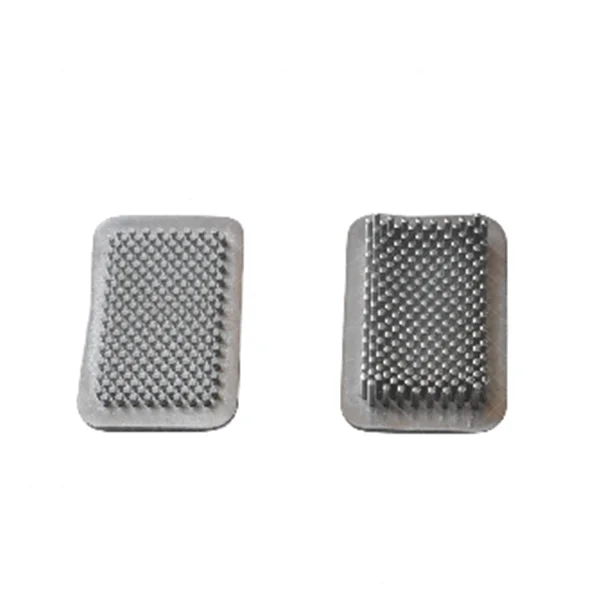- This topic is empty.
-
AuthorPosts
-
2025-06-26 at 6:53 pm #9308
Cold extrusion is a critical metal-forming process widely used in the production of complex mechanical components, especially in automotive, aerospace, and electronics industries. This process enables the efficient formation of intricate geometries with exceptional surface finish, dimensional accuracy, and material integrity. Unlike traditional machining, cold extrusion minimizes material waste and improves mechanical properties through work hardening. In this blog post, Okin, a high performance metal parts manufacturing factory, will share the manufacturing process of high precision cold extrusion parts for sale.
High Precision Cold Extrusion Parts Manufacturing Process
1. Material Selection and Preparation
The quality of high precision cold-extruded components begins with the careful selection of raw material. Cold extrusion generally uses ductile metals that exhibit good plasticity under cold working conditions. Common materials include:
* Low and medium carbon steels
* Aluminum and its alloys
* Copper and copper alloys
* Stainless steels
Once the material is selected, it undergoes stringent metallurgical testing to ensure consistency in grain structure, hardness, and cleanliness. Rods or slugs are cut to precise lengths, cleaned to remove surface contaminants (e.g., rust, oxide scales, or oils), and often phosphate coated or lubricated with zinc stearate to enhance die life and reduce friction during extrusion.
2. Preform Design and Simulation
A critical step before tooling and forming begins is preform design, which entails defining the intermediate shapes the material must pass through before reaching its final form. Advanced finite element analysis (FEA) software is employed to simulate material flow, predict stress concentrations, and identify possible defects like folds, cracks, or underfills.
Key factors considered in simulation include:
* Material flow characteristics
* Temperature distribution
* Die stress and wear
* Press force requirements
* Forming sequence and strain hardening
Simulation drastically reduces trial-and-error in tool development, shortening lead times and ensuring a robust process.
3. Tool and Die Fabrication
High precision cold extrusion requires robust, wear-resistant tooling, typically made from high-speed tool steels (like SKD11, H13, or D2) that are hardened to 60-64 HRC. Dies may be monolithic or inserted-type dies, which allow easier replacement of wear components.
Tool components typically include:
* Extrusion dies (forward and backward)
* Punches and ejectors
* Die holders and guide sleeves
* Strippers and alignment systems
Precision grinding and wire EDM (Electrical Discharge Machining) are employed to ensure tolerances within microns. Surface treatments like TiN or CrN coatings are often applied to improve wear resistance and reduce sticking.

4. Cold Extrusion Process: Forward and Backward Extrusion
The core forming operations in cold extrusion include forward extrusion, backward extrusion, and sometimes combined extrusion:
* Forward Extrusion: The slug is pushed through the die opening, and material flows in the same direction as the punch. This is suitable for producing rods, shafts, and splines.
* Backward Extrusion: The punch enters the slug, and material flows backward around the punch, ideal for forming cups or hollow sections.
* Combined Extrusion: Utilizes both directions in a single stroke to create complex geometries with internal and external features.
These processes are typically performed on hydraulic or servo-mechanical presses with capacities ranging from 300 to 3000 kN, depending on the material and part complexity.
Key process parameters include:
* Punch speed (0.1–1 m/s for high accuracy)
* Extrusion ratio (usually 2:1 to 10:1)
* Lubrication system (automatic spraying or solid film)
* Temperature control (room temperature, but die cooling may be employed)
To achieve high precision, tight control over concentricity, wall thickness, and dimensional tolerances is maintained throughout the process.
5. Intermediate Annealing (If Required)
If the component geometry is too complex or the material strain hardens excessively, intermediate annealing may be necessary between extrusion stages. This heat treatment process relieves internal stresses, restores ductility, and refines grain structure.
Typical annealing parameters for carbon steel:
* Temperature: 650°C – 750°C
* Duration: 30–60 minutes
* Cooling: Controlled furnace cooling or air cooling to prevent distortion
After annealing, components are cleaned again to remove scale and re-lubricated before the next extrusion stage.
6. Post-Forming Operations
While cold extrusion produces near-net shapes, secondary operations may be required to achieve final specifications:
* Trimming and Deburring: To remove flash or irregular edges from the extrusion.
* Coining: A precision stamping operation to improve surface finish or add fine features.
* Piercing/Drilling: For holes or internal threads that cannot be formed during extrusion.
* Thread Rolling: To create external threads with superior fatigue strength.
* Heat Treatment: Such as carburizing, induction hardening, or quenching and tempering to enhance mechanical properties.
These processes are integrated into automated lines to ensure consistency and reduce cycle times.
7. Surface Finishing and Coating
For applications demanding high corrosion resistance or aesthetic appearance, surface finishing processes are applied:
* Polishing or Shot Blasting: To improve surface uniformity.
* Phosphate Coating or Anodizing: For enhanced corrosion resistance.
* Electroplating (Zn, Ni, Cr): Common in automotive and electronics parts.
* Passivation: Especially for stainless steel components to remove free iron.
Surface roughness values of Ra < 0.8 µm are commonly achieved without post-machining due to the smooth die surface and compressive forming mechanism of cold extrusion.
8. Inspection and Quality Control
The final step in the manufacturing process involves rigorous inspection to ensure parts meet stringent dimensional and mechanical specifications. Common inspection techniques include:
* CMM (Coordinate Measuring Machine): For 3D dimensional checks with micron-level accuracy.
* Optical Profilometers: For surface roughness evaluation.
* Microhardness Testing: To assess work hardening and consistency.
* X-ray or Ultrasonic Testing: To detect internal voids or inclusions.
* Functional Testing: Such as pressure testing or fatigue testing, depending on end-use application.
Statistical Process Control (SPC) methods are also applied throughout production to monitor critical dimensions and maintain process capability indices (Cp, Cpk) above 1.33 or higher.
9. Advantages of High Precision Cold Extrusion
Cold extrusion offers several distinct advantages over traditional manufacturing techniques:
* High Material Utilization: Up to 95–98% compared to subtractive machining.
* Superior Surface Finish and Dimensional Accuracy: Often eliminating the need for secondary machining.
* Improved Mechanical Properties: Due to strain hardening and refined grain structure.
* Lower Energy Consumption: Compared to hot forging or machining.
* High Repeatability: Suitable for mass production with tight tolerances.
These benefits make cold extrusion an ideal choice for manufacturing parts such as gear blanks, bearing races, valve components, sensor housings, fasteners, and transmission shafts.
Conclusion
The manufacturing process of high precision cold extrusion parts is a highly controlled, multistage operation that blends materials science, precision engineering, and modern automation. Through careful material selection, advanced simulation, robust tooling, and tight process controls, manufacturers can produce complex metal parts with unmatched consistency, performance, and efficiency. As industries demand more sustainable and cost-effective production methods, cold extrusion continues to stand out as a versatile and scalable solution for high-precision component manufacturing.
-
AuthorPosts
- You must be logged in to reply to this topic.
